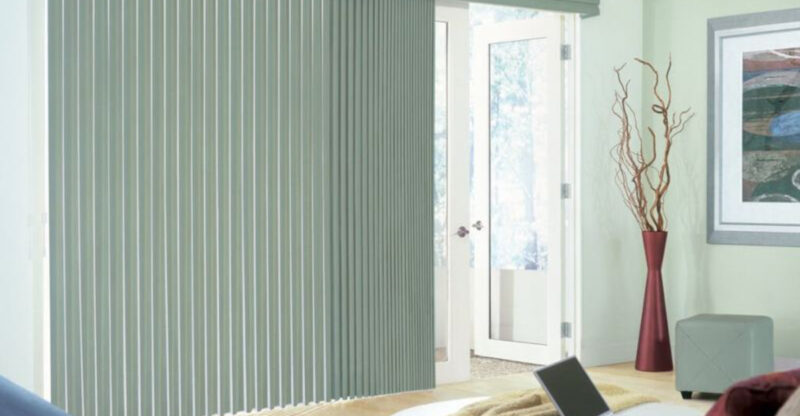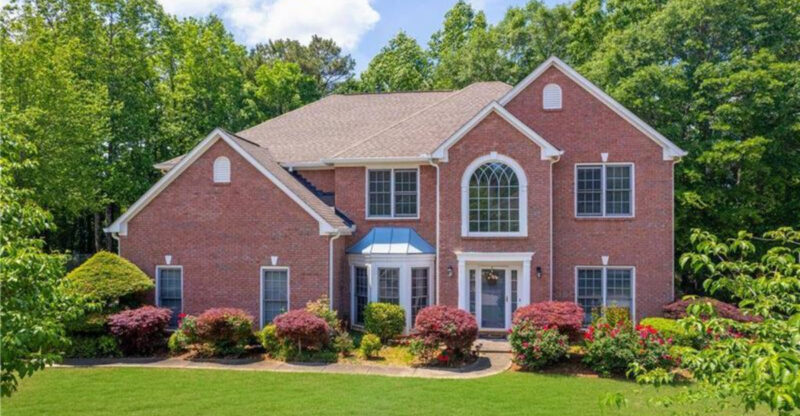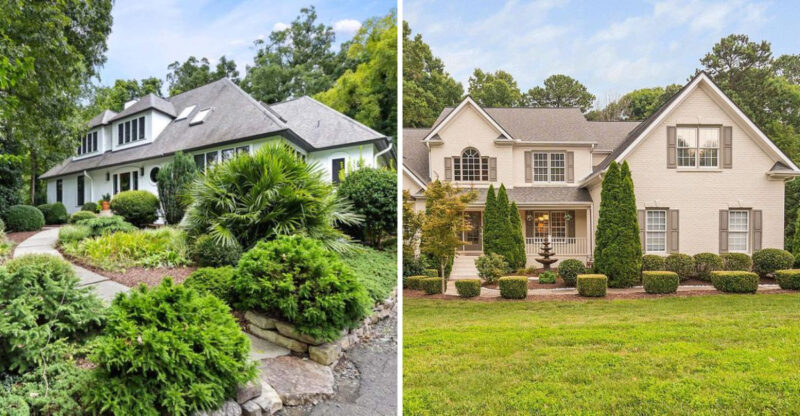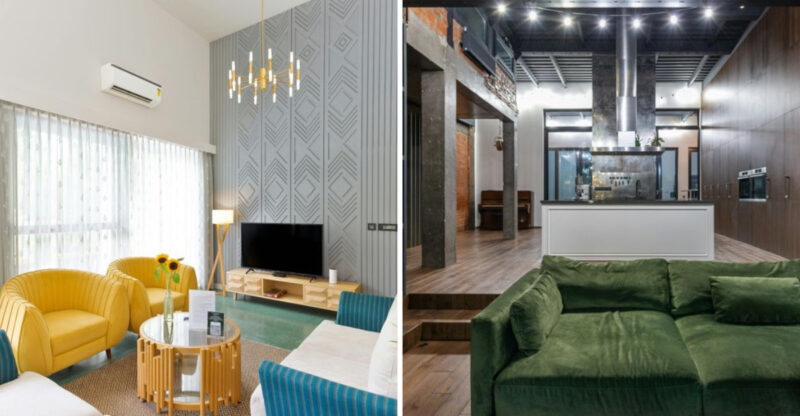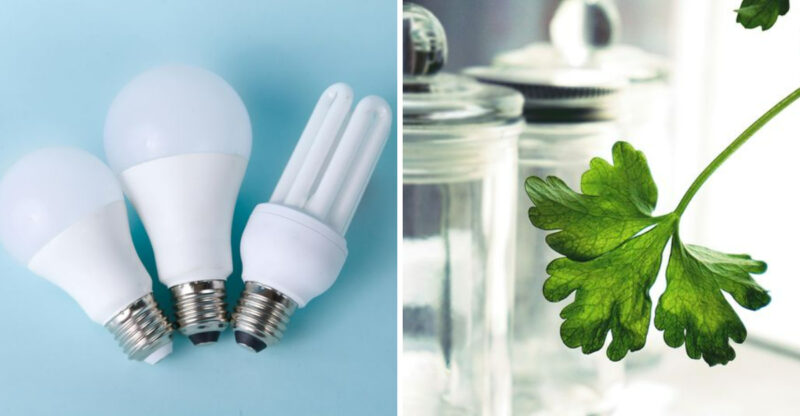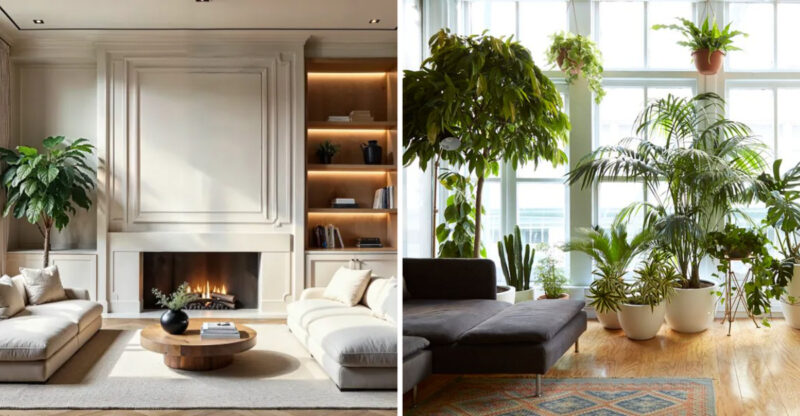32 Housing Trends Experts Believe Could Hurt Home Values In 2025
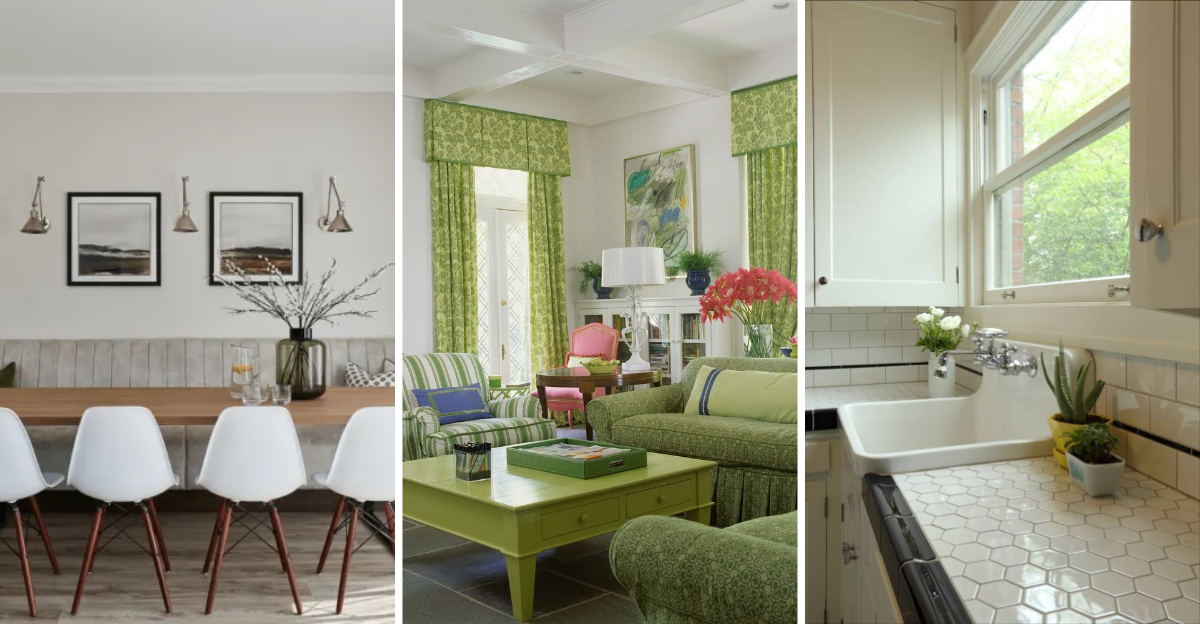
The real estate market constantly evolves, with design choices directly impacting property values.
As we approach 2025, housing experts are warning about specific trends that could significantly decrease home values.
What might seem stylish today could become tomorrow’s deal-breaker for potential buyers. Understanding these potential value-diminishing features can help homeowners make smarter renovation decisions.
1. Popcorn Ceilings
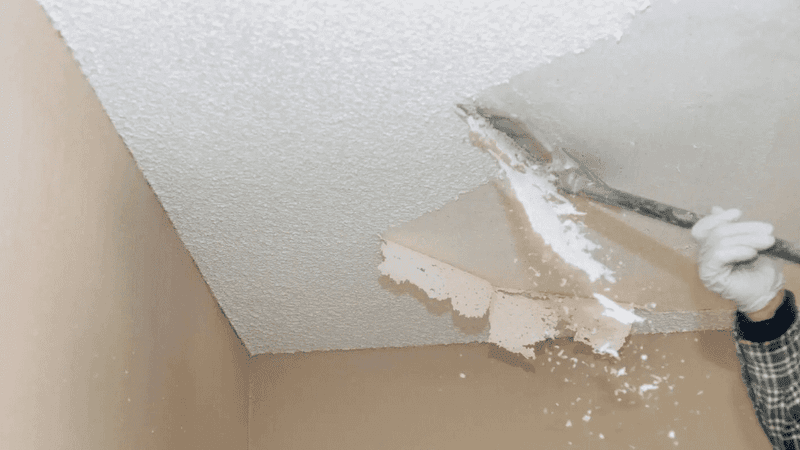
Once a popular texture choice, popcorn ceilings now scream ‘outdated’ to modern buyers. These bumpy surfaces collect dust, are difficult to clean, and often contain asbestos in older homes built before the 1980s.
Removing popcorn ceilings has become one of the first projects new homeowners tackle after purchase. Real estate agents report that homes with these textured ceilings typically sell for 3-5% less than comparable properties with smooth ceilings.
If you’re still living with this dated feature, consider professional removal before listing your home in 2025, as buyers increasingly view popcorn ceilings as an immediate renovation expense.
2. Bright Neon Accent Walls
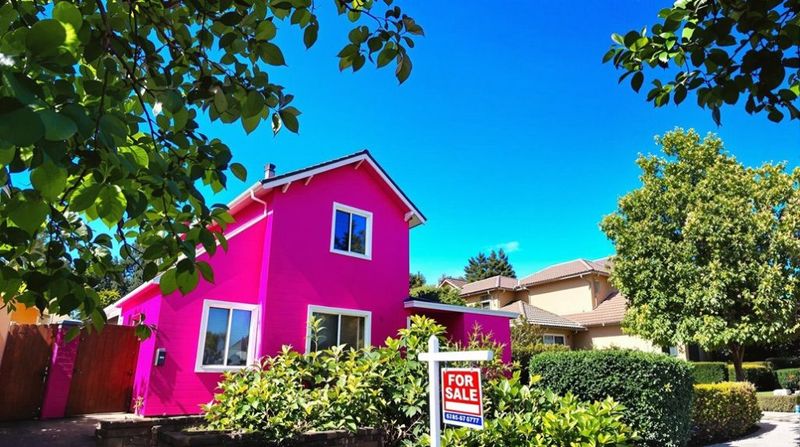
Neon pink, electric blue, or lime green walls might seem like fun personality statements today, but they’re predicted to be major turnoffs by 2025. Housing experts warn that these bold color choices severely limit buyer appeal and photograph poorly in listings.
While painting is relatively inexpensive, potential buyers often overestimate the cost and hassle of repainting. They see bright colors as immediate work rather than charming character.
Realtors suggest that homes with neutral wall colors sell up to 10 days faster and for 1-3% more than homes with unusual color schemes. If you’re planning to sell in the coming years, consider repainting those vibrant walls in warm neutrals that appeal to wider audiences.
3. Excessive Wallpaper Patterns
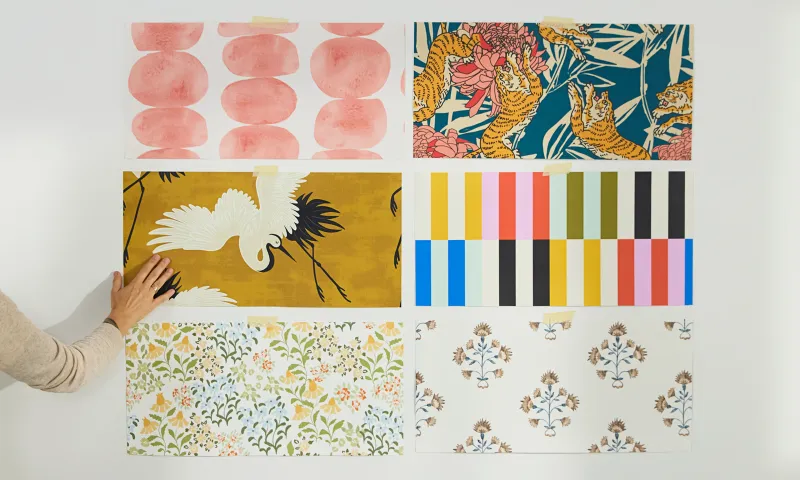
Remember that busy floral wallpaper your grandmother loved? Housing experts predict that homes with excessive wallpaper will face significant value challenges in 2025. Busy patterns, especially in multiple rooms, overwhelm potential buyers who see immediate removal costs.
Wallpaper removal is notoriously time-consuming and can damage walls underneath. Most buyers mentally deduct thousands from their offer when facing dated wallpaper throughout a home.
The problem isn’t wallpaper itself—modern, subtle patterns in limited areas can add character. But homes featuring bold patterns in primary living spaces or throughout multiple rooms will likely face longer market times and lower offers as buyers calculate the cost of creating more neutral spaces.
4. Matching Furniture Sets Throughout
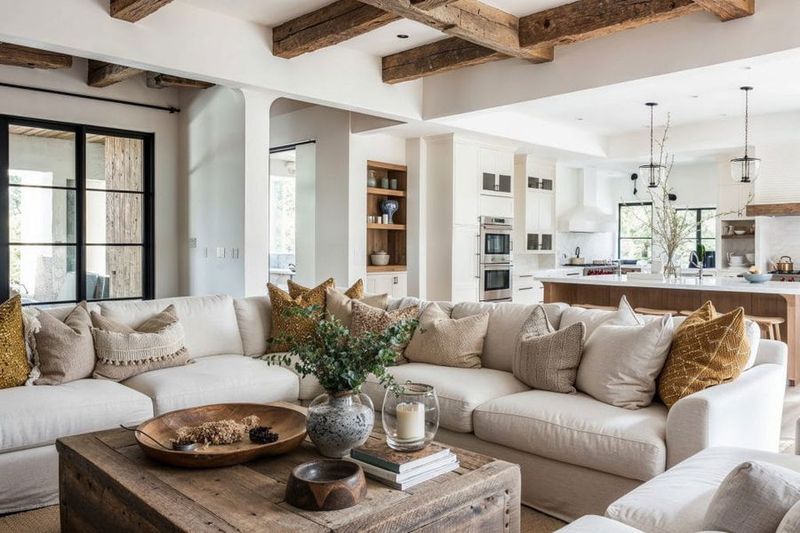
Those perfectly matched bedroom or living room sets might seem like a good idea at the furniture store, but housing experts warn this design choice could hurt home values by 2025. Staged homes with identical matching pieces create a showroom feel rather than a lived-in atmosphere.
Buyers today seek homes with character and personality. When every piece matches exactly, spaces feel flat and uninspired like a furniture catalog rather than a home with history.
If you’re preparing to sell, consider breaking up matching sets with complementary pieces. Mix wood tones, add accent furniture, or incorporate vintage finds. This creates visual interest and helps potential buyers envision their own belongings fitting in, rather than feeling they’re walking through a furniture store display.
5. Heavy Drapery with Tassels
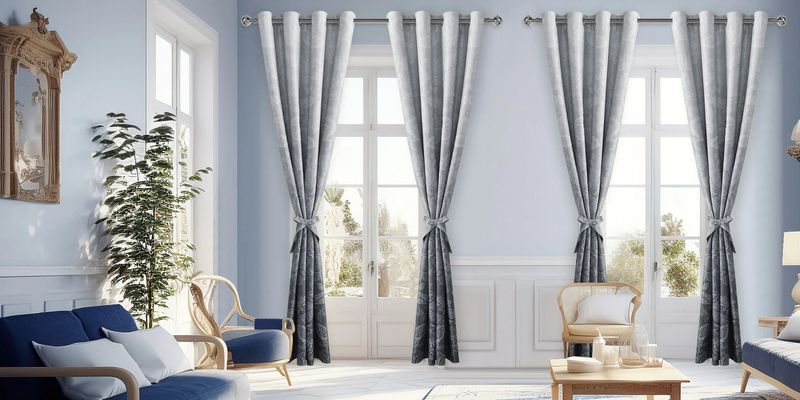
Those ornate, floor-length curtains with swags, tassels, and tie-backs are heading for extinction in modern home design. Housing experts predict that by 2025, homes featuring these heavy window treatments will face significant value challenges as buyers seek light, bright spaces.
Heavy draperies collect dust, block natural light, and make rooms feel smaller and more dated. They’re also associated with formal living that doesn’t match today’s casual lifestyle preferences.
Modern buyers overwhelmingly prefer simple window treatments that maximize natural light. If your home still features elaborate window dressings from decades past, consider replacing them with clean-lined blinds or simple curtain panels. This relatively inexpensive update can dramatically modernize your space and prevent buyers from mentally calculating removal costs.
6. Faux Reclaimed Wood Finishes
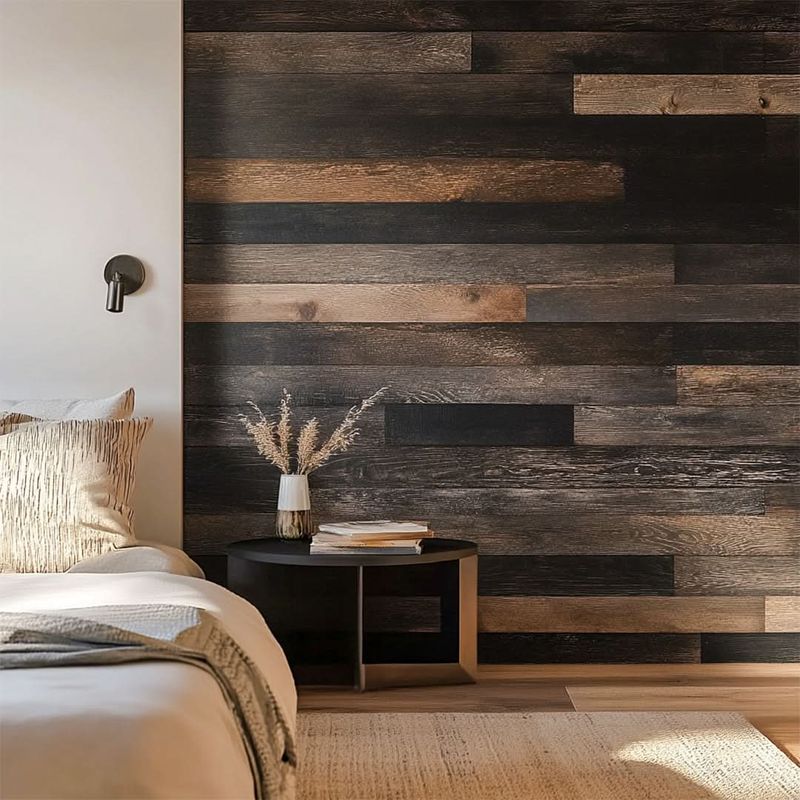
The rustic farmhouse trend brought faux reclaimed wood into countless homes, but experts warn this trend is rapidly fading. By 2025, these artificial wood treatments—particularly on accent walls and furniture—could significantly hurt home values.
Real estate professionals note that buyers are increasingly sophisticated about distinguishing authentic materials from imitations. Faux wood paneling, stick-on planks, and vinyl wood-look materials are being viewed as cheap shortcuts rather than desirable features.
Authentic reclaimed wood will likely retain some appeal for its sustainability story, but mass-produced imitations are already losing favor. If your home features these treatments, consider removing them before listing or at least minimizing their presence to avoid turning off potential buyers looking for more timeless finishes.
7. Industrial Pipe Shelving in Kitchens
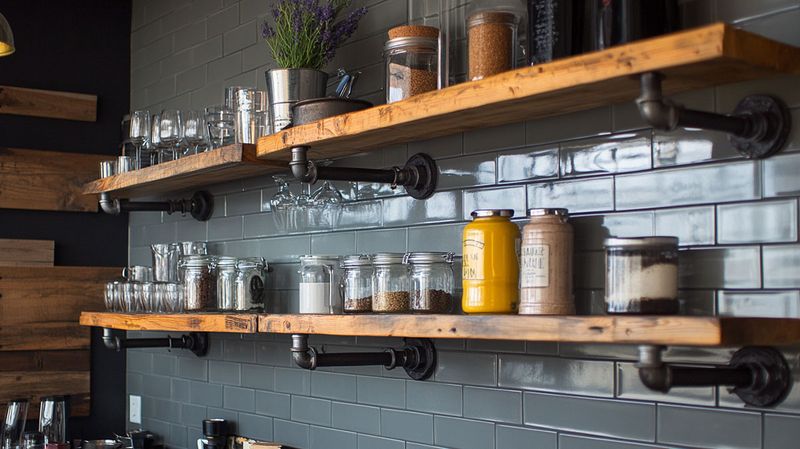
Those exposed pipe shelves that dominated Pinterest boards are quickly becoming dated eyesores. Housing experts predict that by 2025, industrial pipe shelving in kitchens will be viewed as a trend that screams “2010s renovation” rather than timeless design.
The open nature of these shelving units creates practical problems exposed dishes collect dust and grease, requiring constant cleaning. Many homeowners initially love the look but grow tired of the maintenance.
Potential buyers often see these installations as both impractical and a sign of amateur DIY work. If your kitchen features industrial pipe shelving, consider replacing it with either traditional cabinetry or floating shelves with cleaner lines. This update will help your home maintain its value as design preferences continue shifting away from the industrial aesthetic.
8. All-Gray Interiors with No Contrast
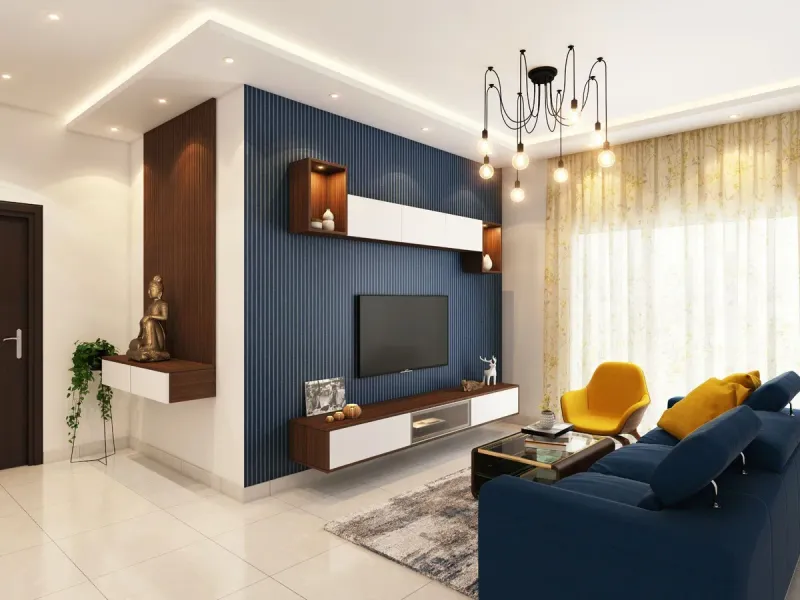
The all-gray trend that dominated the 2010s is predicted to be a significant value-reducer by 2025. Housing experts warn that homes featuring gray-on-gray-on-gray with no contrasting elements create cold, uninviting spaces that turn off potential buyers.
What once felt modern and sophisticated now reads as formulaic and lacking personality. Gray walls, gray floors, gray cabinets, and gray furniture create spaces that feel like carbon copies of every flipped house from the past decade.
If your home is currently a monument to the gray trend, consider introducing warmth through wood tones, textiles in natural colors, or even repainting some surfaces in warmer neutrals. Buyers increasingly seek homes with character and warmth rather than the sterile, monochromatic look that dominated recent years.
9. Busy Granite Countertops
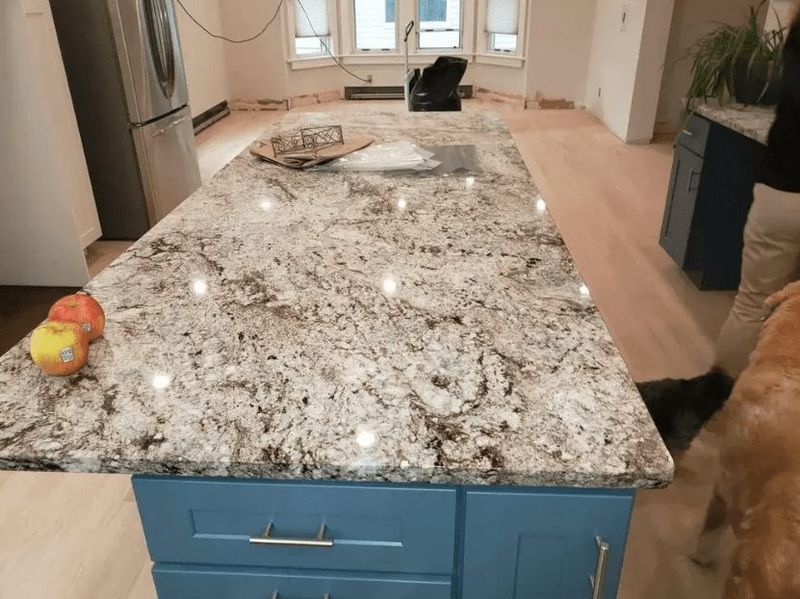
Those speckled, multi-colored granite countertops that dominated kitchens in the early 2000s are quickly becoming value-detractors. Housing experts predict that by 2025, busy granite patterns—especially in browns, tans, and golds—will significantly date homes in buyers’ eyes.
The problem isn’t granite itself but rather the visually chaotic patterns that dominated earlier installations. These busy surfaces make kitchens feel cluttered even when clean and clash with most design styles.
If you’re still living with dated granite, consider replacing countertops before selling or at least be prepared for lower offers. Buyers increasingly prefer either solid-colored engineered quartz or subtle, natural stone with minimal veining. Even a moderately priced quartz replacement can deliver better return on investment than keeping outdated, busy granite patterns.
10. Mismatched Hardware Finishes
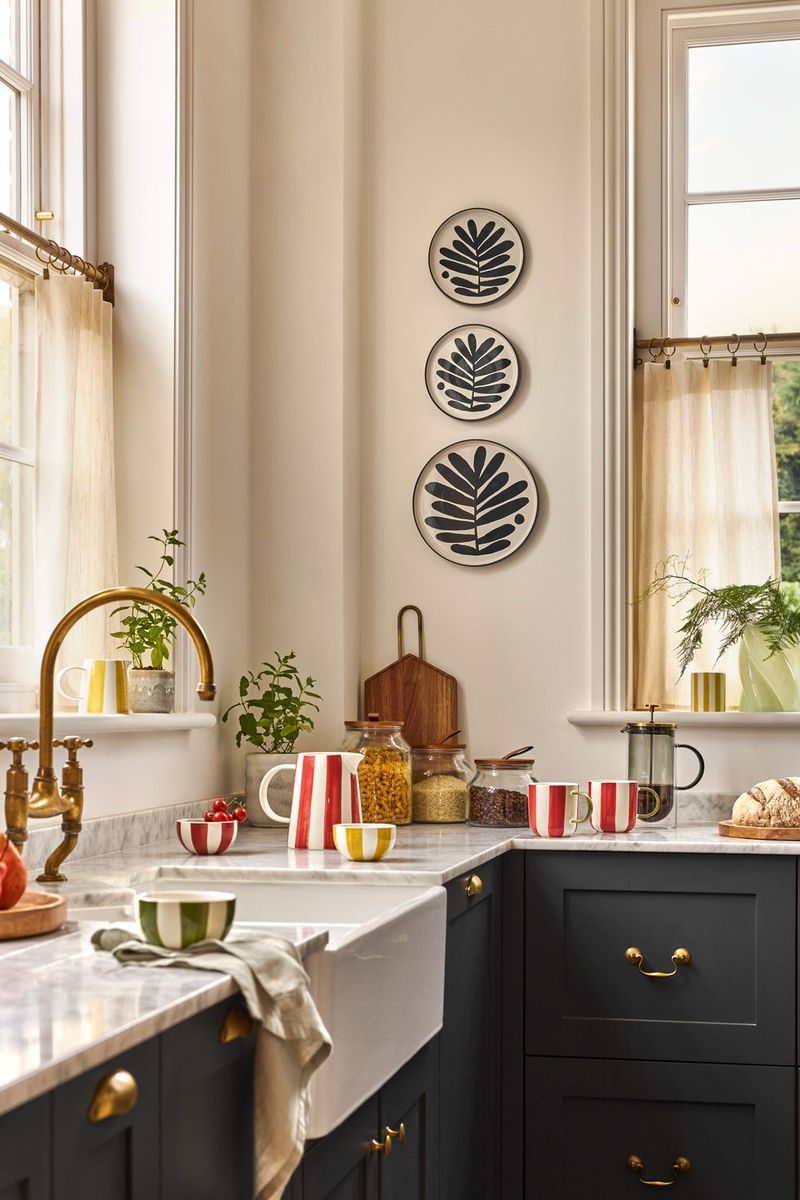
Mixing metals can be stylish when done intentionally, but housing experts warn that truly mismatched hardware finishes will hurt home values by 2025. Homes featuring a random assortment of brass, nickel, bronze, and chrome fixtures throughout create a disjointed, unplanned appearance.
This issue commonly appears in homes where fixtures were replaced individually over time without an overall design plan. Potential buyers see these inconsistencies as signs of piecemeal maintenance rather than cohesive design.
The good news? This is one of the easiest and most affordable updates to make before selling. Simply replacing doorknobs, cabinet pulls, and bathroom fixtures with coordinating finishes can create visual harmony. While intentional mixing of 2-3 complementary metals can work beautifully, random mixtures of 4+ finishes will likely continue hurting home values.
11. Over-the-Top Themed Rooms
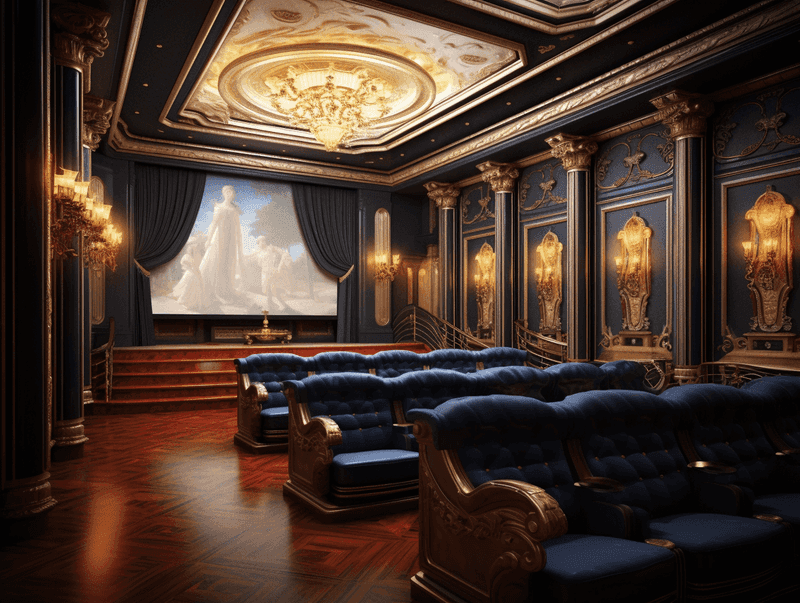
That pirate-themed kid’s bedroom or full-on Tuscan-inspired kitchen might seem fun, but housing experts warn these highly personalized spaces will significantly hurt resale values by 2025. Rooms with extreme themes—whether nautical, superhero, sports team, or specific time period—severely limit buyer appeal.
Potential buyers struggle to see past heavy theming and often calculate substantial renovation costs to neutralize these spaces. Even if the theme is well-executed, it represents your personal taste, not theirs.
If you have themed rooms in your home, consider neutralizing them before listing. Keep personal themes to easily removable décor items rather than built-in features, wall treatments, or permanent fixtures. This allows buyers to envision their own lifestyle in the space rather than feeling like they’re moving into someone else’s fantasy.
12. Drop Ceiling Panels in Living Spaces
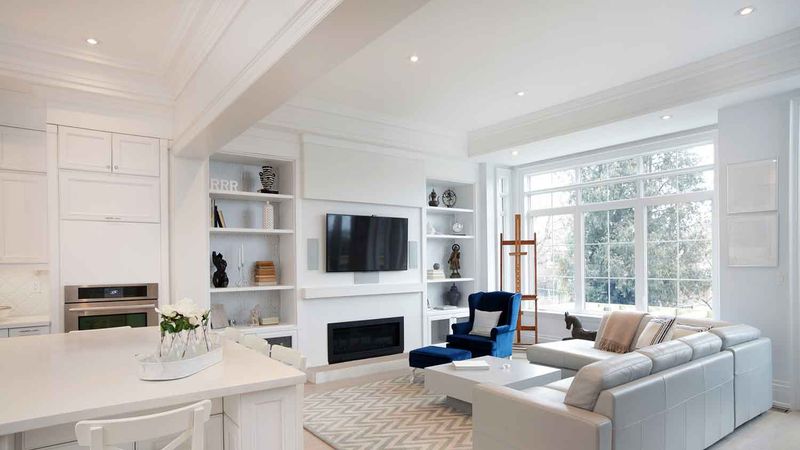
Those office-style drop ceilings might have seemed practical when installed, but housing experts predict they’ll be major value-killers by 2025. These modular ceiling systems with visible grid lines and acoustic tiles create institutional feelings in residential spaces.
Commonly installed to hide plumbing or wiring issues, drop ceilings significantly lower ceiling height and create a commercial rather than residential atmosphere. They’re particularly problematic in basements, where ceiling height is already limited.
If your home features drop ceilings in living areas, consider removing them before selling. While this might reveal issues that need addressing, most buyers prefer seeing the actual structure rather than a cover-up. If removal isn’t feasible, consider upgrading to more residential-looking panels without visible grid lines, though this remains a compromise rather than an ideal solution.
13. Mirrored Closet Doors
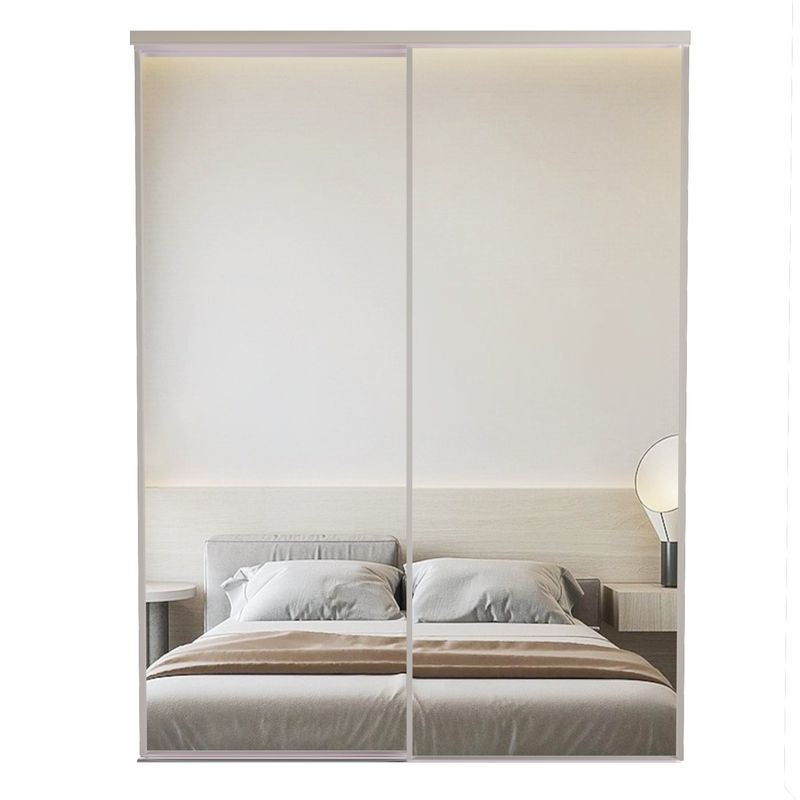
Those wall-to-wall mirrored sliding closet doors that dominated 1980s and 90s homes are predicted to significantly impact resale values by 2025. Housing experts note that these reflective surfaces immediately date a bedroom and are among the first items new homeowners typically replace.
Beyond their dated appearance, these mirrors often develop spotting, edge darkening, and track problems over time. They’re also challenging to clean and maintain, especially in children’s rooms.
If your home still features mirrored closet doors, consider replacing them with simple painted doors, frosted glass, or even curtain systems before listing. This relatively inexpensive update can dramatically modernize bedrooms and prevent buyers from mentally deducting replacement costs from their offers.
14. Bright Brass Bathroom Fixtures
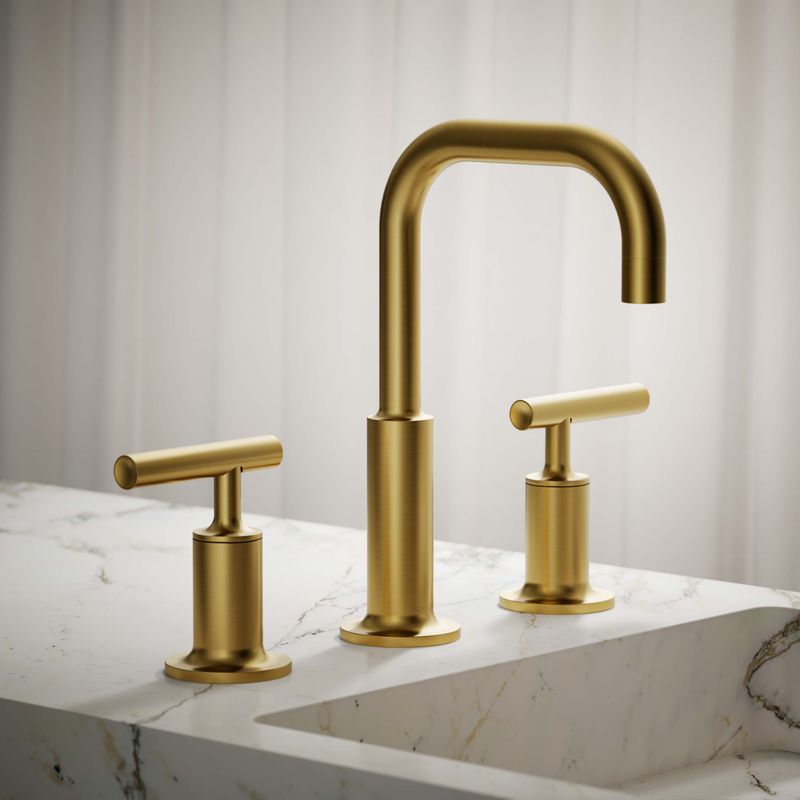
Those shiny yellow-gold bathroom fixtures popular in the 1980s and 90s are predicted to be significant value-detractors by 2025. Housing experts warn that bright brass faucets, shower frames, and cabinet hardware immediately date bathrooms in buyers’ eyes.
While warm metallics have made a comeback, today’s popular brass has a softer, brushed finish rather than the mirror-like shine of older installations. The dated bright brass often appears alongside other problematic features like cultured marble countertops and oak vanities.
Replacing bathroom fixtures is a relatively inexpensive update that delivers strong return on investment. If your bathrooms still feature shiny brass elements, consider updating to more current finishes like matte black, brushed nickel, or modern brushed brass before listing your home to avoid buyer objections.
15. Tiled Kitchen Sinks
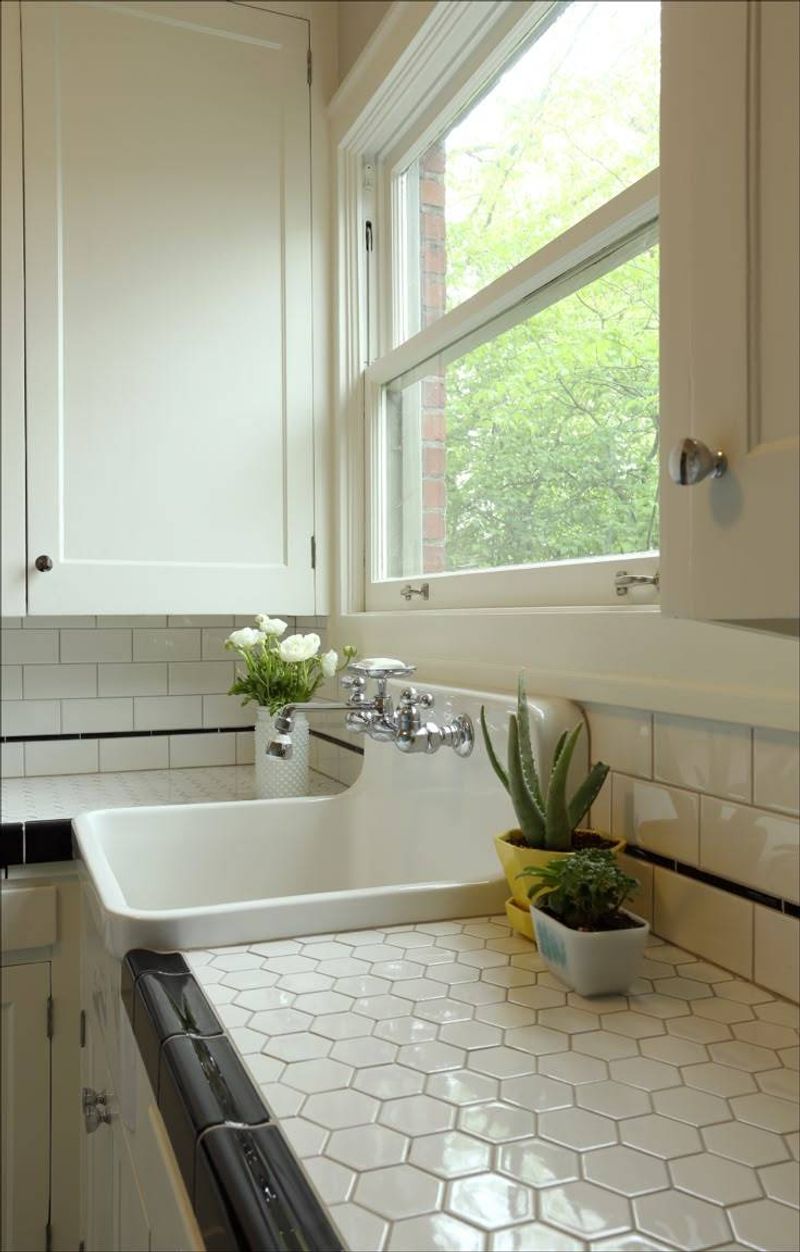
Those tiled-in kitchen sinks with grout lines around the edges were once considered high-end, but housing experts predict they’ll significantly hurt home values by 2025. These installations create serious practical problems that buyers immediately notice.
The grout lines surrounding these sinks are notorious for trapping food particles, harboring mold, and being nearly impossible to keep clean. Water damage and deterioration around the sink edge is extremely common after years of use.
If your kitchen still features a tiled-in sink, consider replacing it with an undermount or farmhouse style before selling. This update not only addresses functional concerns but also significantly modernizes your kitchen’s appearance. While the replacement cost isn’t insignificant, it’s typically less than what buyers will mentally deduct when calculating renovation expenses.
16. Ornate Ceiling Medallions
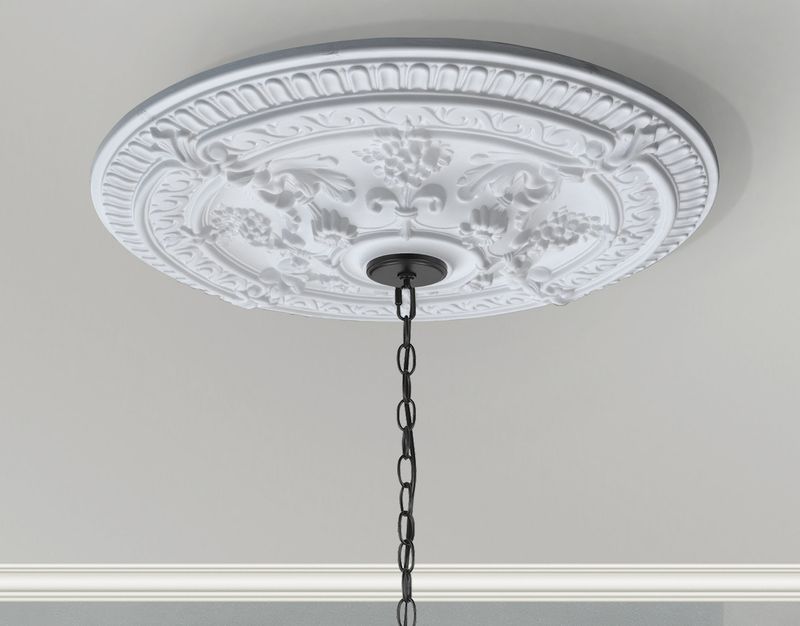
Those elaborate Victorian-style ceiling medallions surrounding light fixtures are predicted to be value-detractors by 2025. Housing experts warn that these ornate plaster or polyurethane decorations often appear disconnected from a home’s overall architectural style.
The problem isn’t medallions themselves but rather their inappropriate use in homes without corresponding architectural details. A simple ranch-style home with a suddenly elaborate ceiling medallion creates a jarring, mismatched impression.
If your home features medallions that don’t match its era or style, consider removing them before listing. Alternatively, replace overly ornate versions with simpler designs that complement your home’s architecture. This small update can prevent buyers from seeing your home as having inconsistent, mismatched design elements that will need addressing after purchase.
17. Wall-to-Wall Carpeting Upstairs
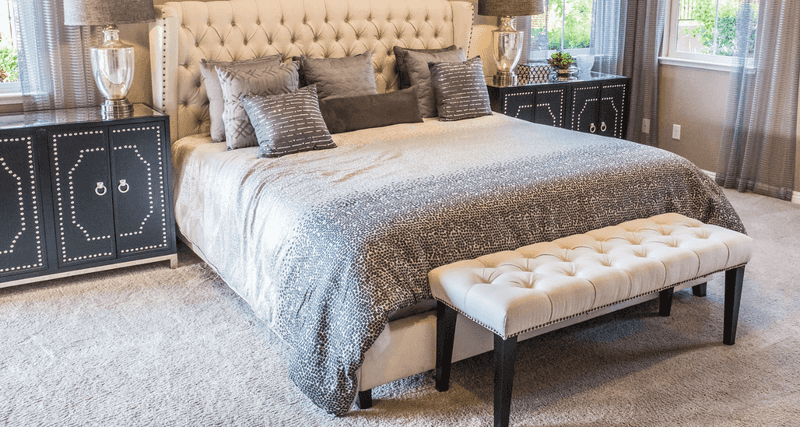
Wall-to-wall carpeting, especially in bedrooms and upstairs hallways, is predicted to significantly impact home values by 2025. Housing experts note that buyers increasingly view carpet as outdated, unhygienic, and immediately in need of replacement.
The aversion to carpet has intensified following health concerns about dust, allergens, and difficulty in deep-cleaning soft surfaces. Buyers with allergies or respiratory issues often immediately eliminate carpeted homes from consideration.
If your home still features wall-to-wall carpeting upstairs, consider replacing it with hardwood, engineered wood, or high-quality laminate before selling. While this represents a significant investment, flooring replacement typically delivers 70-80% return on investment, plus dramatically reduced time on market. At minimum, ensure existing carpets are professionally cleaned before showings.
18. Corner Tubs in Small Bathrooms
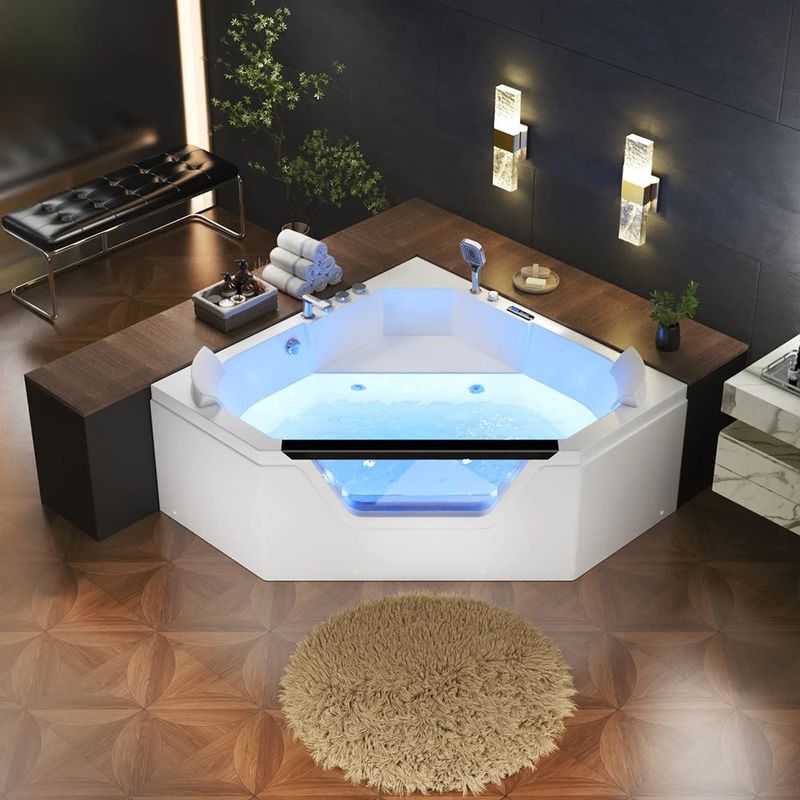
Those massive corner jetted tubs that dominated 1990s master bathrooms are predicted to be significant value-detractors by 2025. Housing experts warn that these space-hogging fixtures, particularly in modestly-sized bathrooms, create awkward layouts and waste valuable square footage.
Modern homebuyers increasingly prefer large walk-in showers over rarely-used soaking tubs. The corner installation style, often set at 45-degree angles, creates unusable triangular dead space in the bathroom layout.
If your bathroom still features a corner tub, especially one that dominates the room, consider a renovation before listing. Replacing it with a spacious shower or more appropriately sized freestanding tub can dramatically update your bathroom’s functionality and appearance. This renovation, while not inexpensive, typically delivers strong return on investment through increased buyer appeal.
19. Pop-Open Appliance Garages
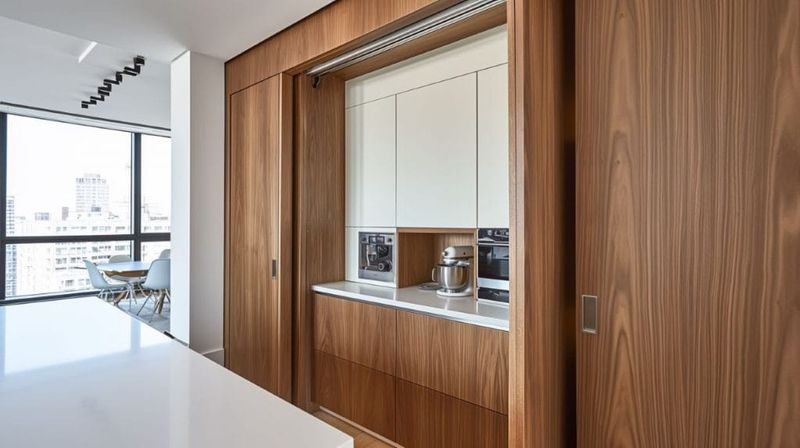
Those roll-top wooden cabinets designed to hide countertop appliances are predicted to significantly hurt kitchen appeal by 2025. Housing experts warn that these “appliance garages” waste valuable counter space and create awkward, hard-to-access storage.
These fixtures were popular in the 1980s and 90s but have fallen out of favor as kitchen design emphasizes clean lines and uninterrupted counter space. Their curved roll-top mechanism often breaks down over time, creating non-functional eyesores.
If your kitchen still features an appliance garage, consider removing it before listing your home. This relatively simple modification creates more usable counter space and updates your kitchen’s appearance. Modern buyers prefer either displaying attractive appliances or storing them in traditional cabinets rather than these dated, space-consuming hideaways.
20. Overstuffed Gallery Walls
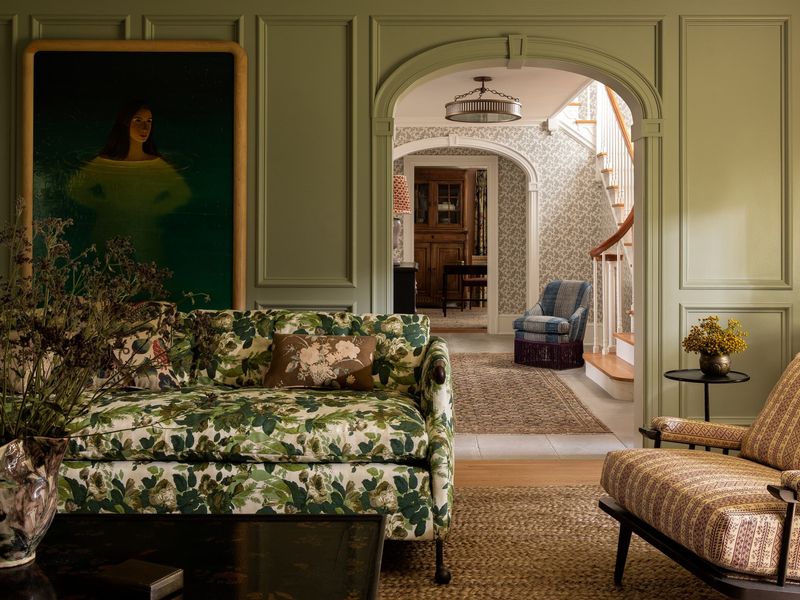
Those wall-to-wall, floor-to-ceiling photo and art displays might showcase your family memories, but housing experts warn they’ll hurt home values by 2025. Overstuffed gallery walls with dozens of frames create visual chaos that overwhelms potential buyers.
The problem isn’t displaying art or photos but rather the cluttered, maximalist approach. These busy walls make spaces feel smaller and prevent buyers from visualizing their own belongings in the space.
If you’re preparing to sell, consider significantly paring down gallery displays to just a few carefully arranged pieces. This creates a more spacious feeling and helps buyers focus on the home’s features rather than your personal items. Remember that successful home staging emphasizes the space itself rather than the current owner’s collections and memories.
21. Synthetic Turf in Front Yards
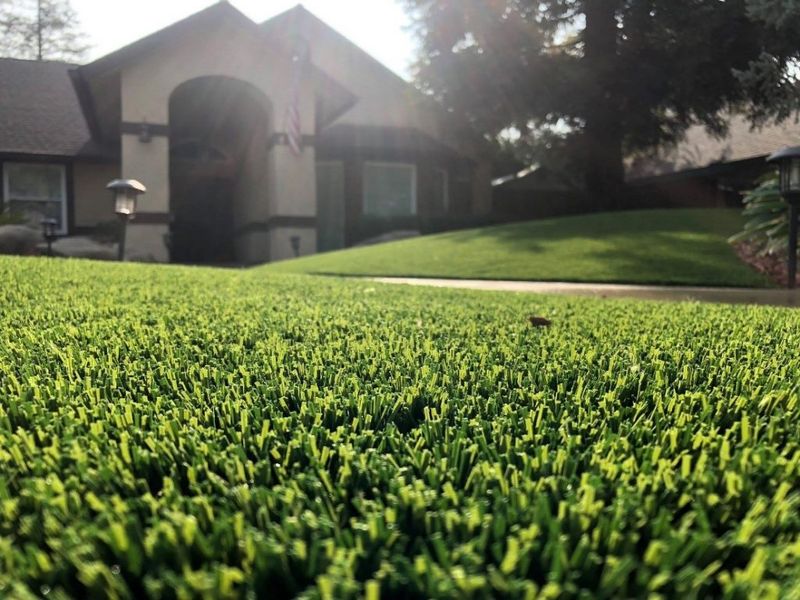
Artificial grass might seem like a low-maintenance solution, but housing experts predict that synthetic turf in front yards will significantly hurt curb appeal by 2025. As environmental concerns grow, fake grass is increasingly viewed as an ecological negative rather than a practical alternative.
Beyond environmental issues, artificial turf often develops an unnatural, worn appearance over time. It can become hot enough to be uncomfortable in summer months and develops drainage problems that natural lawns don’t experience.
If your home features synthetic grass in highly visible areas, consider replacing it with drought-tolerant natural landscaping before selling. Native plants, decorative gravel, or properly installed natural grass all provide better curb appeal than artificial alternatives. This landscape update can significantly improve first impressions when potential buyers visit your property.
22. Faux Stone or Brick Veneers
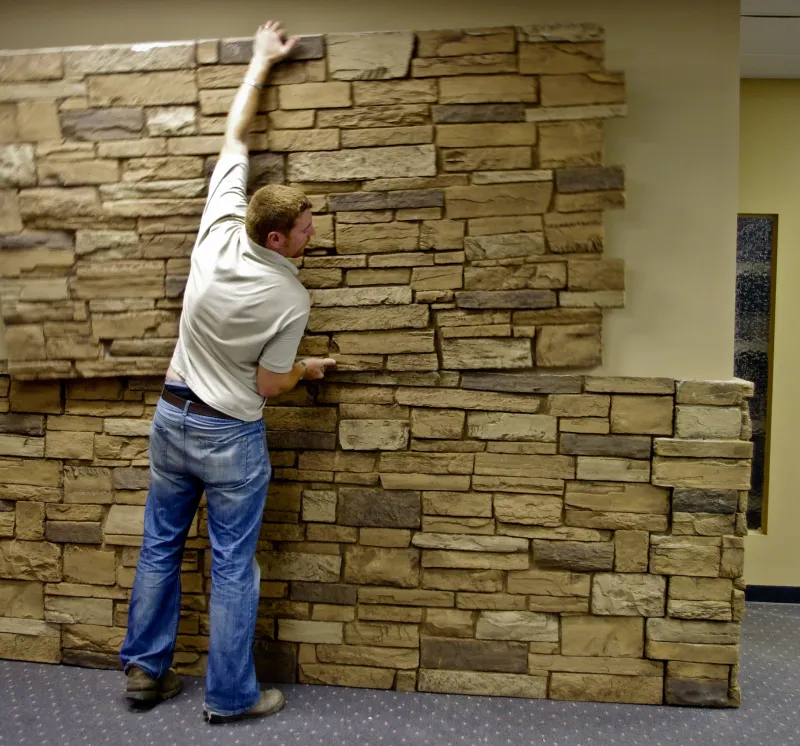
Those stick-on stone or brick panels might seem like an affordable way to add character, but housing experts predict they’ll significantly hurt home values by 2025. These thin veneers, particularly when applied to interior walls, often appear obviously fake and create maintenance headaches.
The problem isn’t stone or brick itself but rather the low-quality appearance of many DIY veneer installations. Seams become visible over time, edges peel away from walls, and the overall effect reads as a temporary trend rather than timeless architecture.
If your home features obviously fake stone or brick veneers, especially indoors, consider removing them before listing. While authentic masonry remains desirable, poor-quality imitations signal to buyers that the home may contain other shortcuts or DIY projects that prioritized speed over quality.
23. Matching Window Valances Throughout
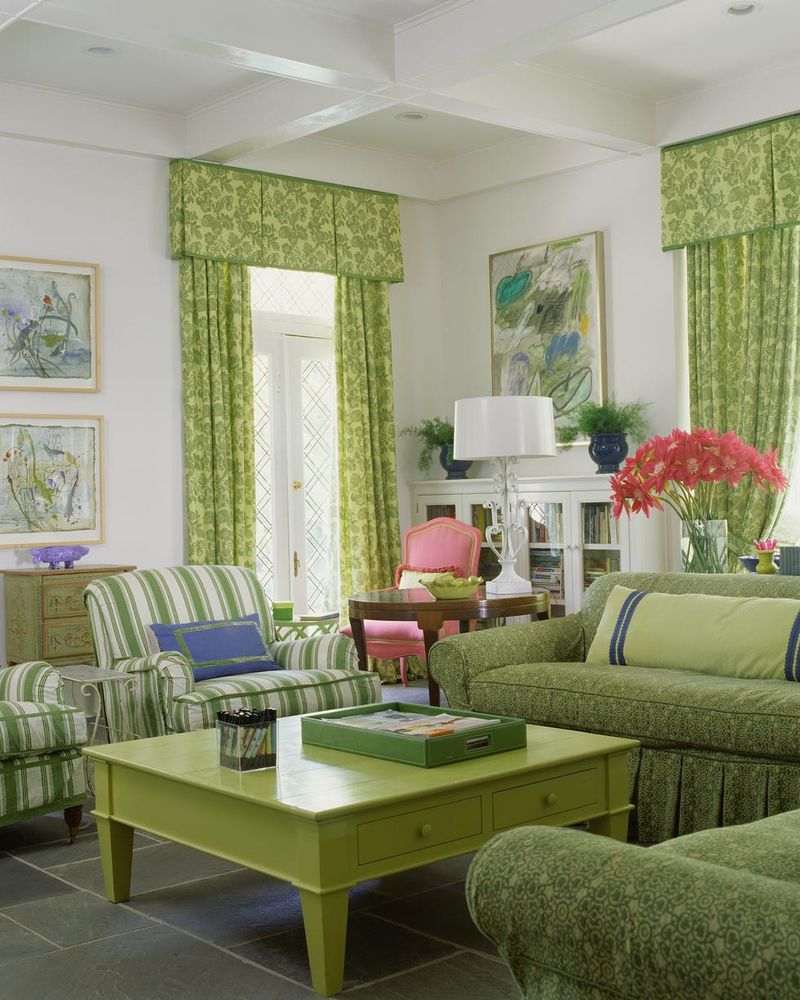
Those short fabric valances that match in every room might have been a popular window treatment solution in the 1990s, but experts predict they’ll significantly hurt home values by 2025. These dated toppers create a cookie-cutter appearance that immediately signals to buyers that the home hasn’t been updated in decades.
The matching patterns across multiple rooms, often in busy floral or striped fabrics, create visual clutter while failing to provide any practical light control or privacy benefits. They collect dust and typically appear alongside other dated features.
If your home still features matching valances throughout, consider removing them entirely before listing. Modern window treatments that maximize natural light while providing functional benefits will appeal more to today’s buyers than decorative-only toppers that serve primarily to date your interiors.
24. Oversized Kitchen Islands in Small Spaces
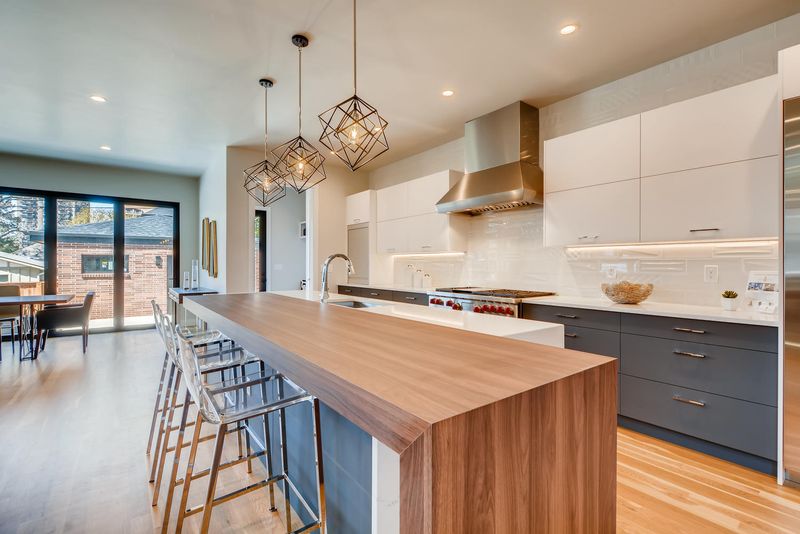
Kitchen islands add valuable workspace, but housing experts warn that disproportionately large islands in modest kitchens will hurt home values by 2025. These oversized features create traffic flow problems and make kitchens feel cramped rather than functional.
The problem occurs when homeowners prioritize island size over practical movement space. Industry standards recommend at least 36-42 inches of clearance around all sides, but many DIY renovations ignore these guidelines.
If your kitchen features an island that dominates the space or requires sidling around edges to navigate the room, consider replacing it with a more appropriately sized version before selling. Alternatively, in very small kitchens, removing the island entirely and reverting to open floor space might actually increase functionality and perceived value. Buyers consistently prioritize comfortable workflow over trendy features that compromise basic usability.
25. Carpeted Bathrooms
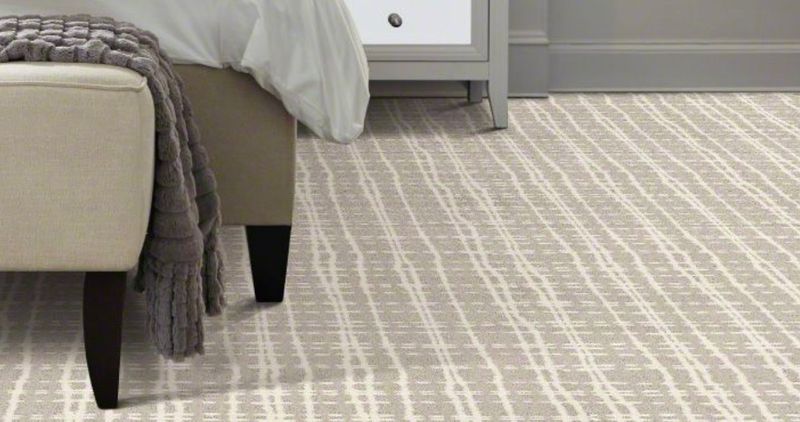
Wall-to-wall carpet in bathrooms was briefly popular in the 1970s, but housing experts unanimously predict this feature will significantly reduce home values in 2025. The combination of moisture and carpet creates serious practical and hygienic concerns that immediately turn off potential buyers.
Carpeted bathrooms are notorious for harboring mold, mildew, and bacteria beneath the surface. Even when visibly clean, buyers assume the worst about what might be lurking in the fibers after years of use around toilets and showers.
If your home still features carpeted bathrooms, replacing the flooring should be your top priority before listing. Ceramic tile, luxury vinyl plank, or even quality sheet vinyl will dramatically improve buyer perception. This relatively inexpensive update typically delivers return far exceeding its cost through improved marketability and higher offers.
26. Cluttered Open Shelving Displays
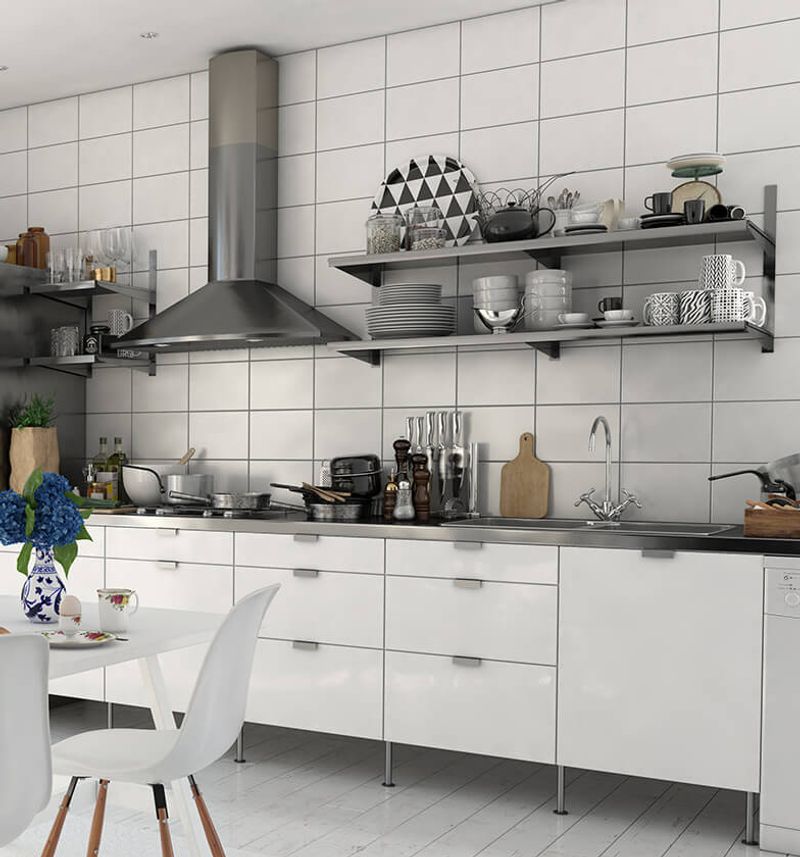
Open shelving can be stylish when executed properly, but housing experts warn that overcrowded, messy shelves will significantly hurt home values by 2025. These chaotic displays make kitchens and living spaces appear smaller, disorganized, and difficult to maintain.
The trend toward open shelving assumed homeowners would curate attractive, minimal displays. Instead, many shelves become catch-alls for everyday items, creating visual clutter that overwhelms spaces.
If your home features open shelving, significantly pare down what’s displayed before listing. Aim for 30-40% empty space on each shelf, with remaining items thoughtfully arranged in cohesive color schemes. Alternatively, consider replacing some open shelving with closed cabinetry, which buyers increasingly prefer for its practical storage capabilities and cleaner visual appearance.
27. Fixed Booth Seating in Kitchens

Those built-in breakfast nooks with fixed bench seating might seem cozy, but housing experts predict they’ll hurt home values by 2025. These permanent installations limit furniture arrangement options and often waste space with awkward configurations.
The problem isn’t casual dining areas themselves but rather the inflexibility of built-in seating. Fixed booths typically accommodate fewer people than a simple table with chairs while taking up similar square footage.
If your kitchen features a built-in booth, consider removing it before listing if the construction allows. Replacing it with a flexible arrangement of table and chairs shows the space’s potential while allowing buyers to envision their own furniture. This modification creates a more spacious feeling and appeals to buyers who prioritize adaptable spaces that can evolve with their needs.
28. Built-In Microwaves Above Stoves

Those over-the-range microwaves that dominated kitchen design for decades are now predicted to hurt home values by 2025. Housing experts note that this placement is increasingly viewed as both impractical and potentially unsafe, particularly in family homes.
The problems are numerous: short people and children can’t safely reach them, steam from cooking damages the microwave’s electronics, and they provide less effective ventilation than proper range hoods. Their placement also requires reaching over hot burners to access food.
If your kitchen still features an over-range microwave, consider relocating it before listing. Modern kitchen design favors microwaves in base cabinets, built into islands, or installed in microwave drawers. This simple update not only modernizes your kitchen’s appearance but addresses practical concerns that today’s safety-conscious buyers immediately notice.
29. Cheap Vinyl Plank Flooring
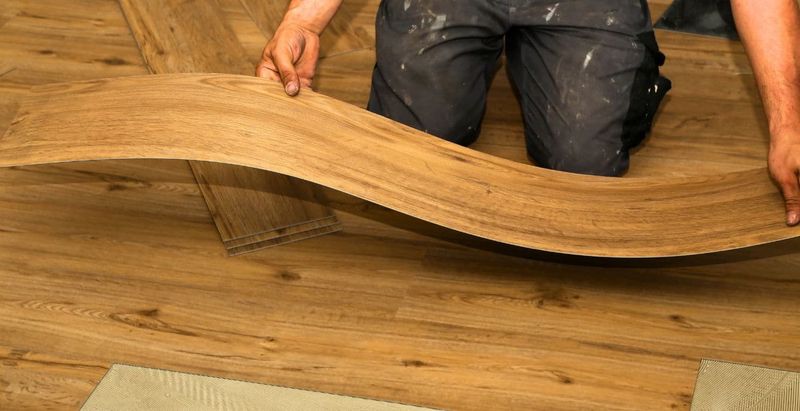
Not all vinyl flooring is created equal, and housing experts predict that low-quality vinyl plank installations will significantly hurt home values by 2025. These budget materials often appear obviously fake, with repeating patterns, hollow sounds when walked on, and poor durability.
The problem isn’t vinyl itself high-quality luxury vinyl plank can be an excellent flooring choice. Rather, it’s the bargain-basement products often chosen for quick flips or rental properties that concern buyers.
If your home features obviously cheap vinyl flooring with visible wear patterns, consider replacing it before listing. While this represents a significant investment, flooring is one of the first elements buyers notice. Quality flooring signals to potential buyers that the home has been well-maintained throughout, while cheap materials suggest corners may have been cut elsewhere as well.
30. Gas Fireplaces with Fake Flames
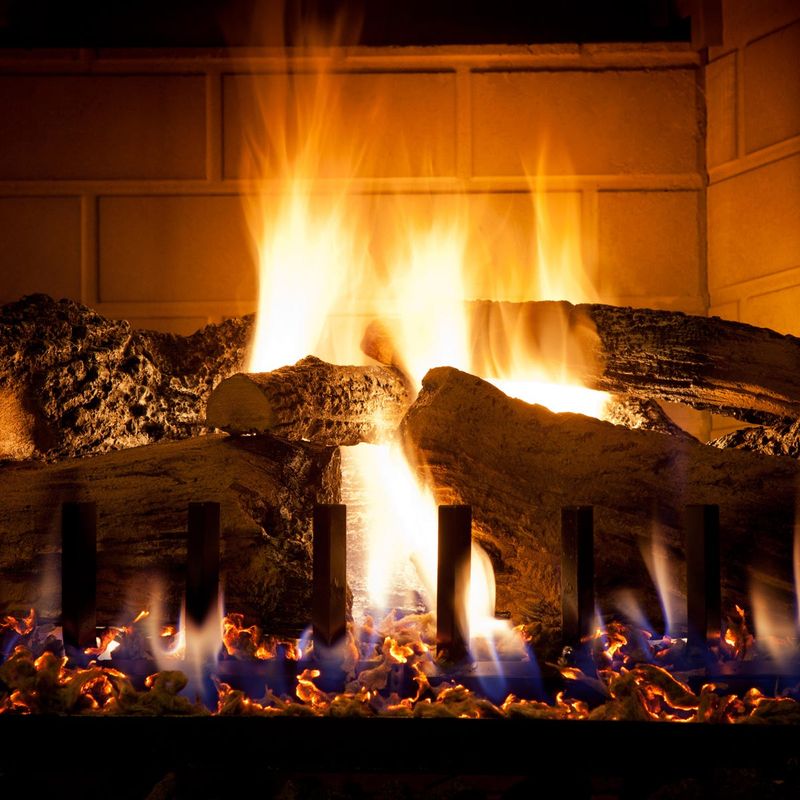
Gas fireplaces offer convenience, but housing experts warn that units with obviously fake-looking flames and dated designs will hurt home values by 2025. These older units with blue flames, artificial logs that never change position, and brass or gold trim immediately date a living space.
The issue isn’t gas fireplaces generally but rather older models that fail to create a convincing fire appearance. Modern buyers who prioritize ambiance find these dated units more distracting than enhancing.
If your home features an older gas fireplace with obviously fake flames, consider updating it before listing. Newer models with realistic yellow flames, glowing embers, and contemporary styling offer the convenience of gas with much more convincing aesthetics. This update can transform a dated feature into a selling point that adds character and coziness to your living spaces.
31. Turquoise or Bright Aqua Kitchens
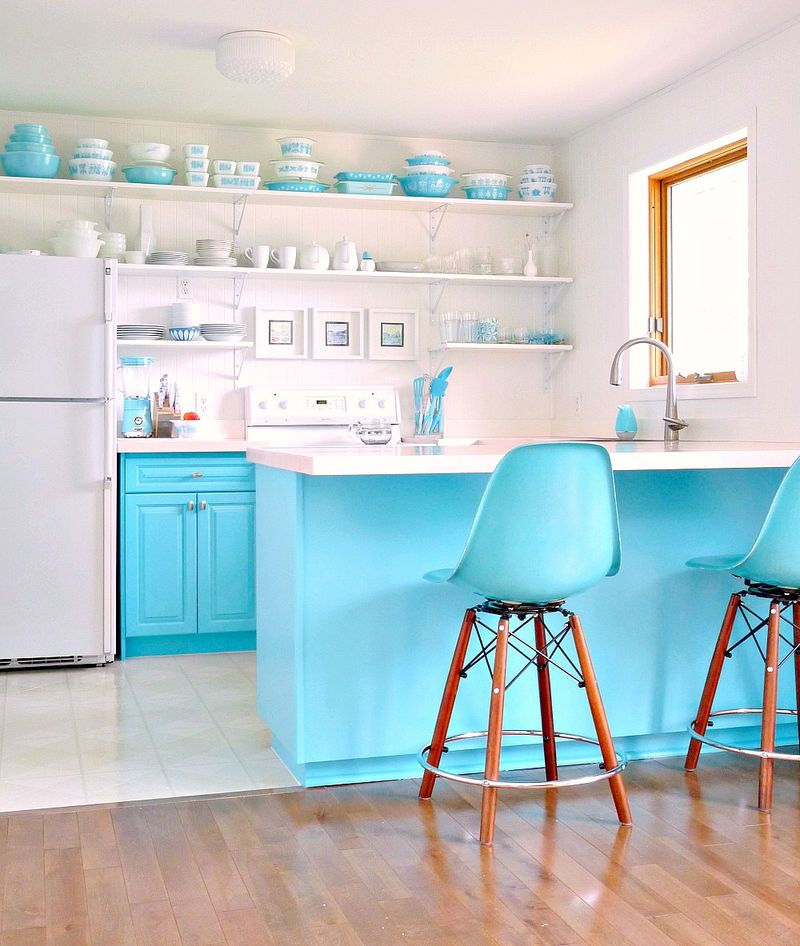
Bold kitchen colors come and go, but housing experts specifically warn that turquoise and bright aqua cabinets or walls will significantly hurt home values by 2025. These vibrant blue-greens, popular during recent renovation trends, are already showing signs of dating homes rather than updating them.
While white kitchens remain timeless and even some color trends have staying power, these specific bright tones quickly read as “pandemic renovation” to potential buyers. They limit design flexibility and often clash with flooring and countertop materials.
If your kitchen features turquoise or aqua as a dominant color, consider repainting before listing. Neutral cabinet colors with timeless appeal will help your home appeal to the broadest range of buyers. This relatively inexpensive update can dramatically increase marketability and prevent your kitchen from being immediately earmarked for renovation by potential buyers.
32. Too Many Throw Pillows on Sofas

Decorative pillows add personality, but housing experts warn that sofas overloaded with throw pillows will hurt staging effectiveness by 2025. Excessive pillows often 8-10 per couch make furniture appear smaller and create an impression of clutter rather than comfort.
The problem isn’t decorative pillows themselves but rather their overwhelming quantity in many staged homes. When pillows occupy more than 30% of seating space, they become a functional hindrance rather than an aesthetic enhancement.
When preparing your home for sale, limit sofas to 2-4 strategically placed pillows that complement your color scheme. This creates a more spacious impression while still adding texture and color. Remember that effective staging emphasizes the room’s proportions and functionality rather than the accessories, allowing buyers to focus on the home’s permanent features rather than removable décor.

